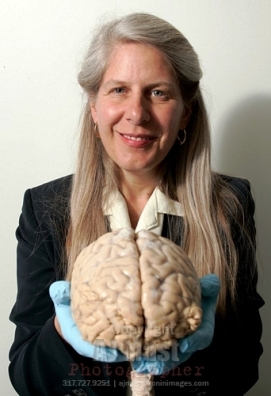
Jill Bolte Taylor
BREAKING up is hard to do especially when it comes to ingrained scientific worldviews.
Even after they have betrayed us, dogmatic style beliefs still cling like burrs to our psyche, and our brains, despite all logic.
Recall the insistent flat earth and geocentric crowd, and creationist belief that the Earth is only ten thousand years old.
The list is very long. Science is littered with the remains of once sacred cows.
Until only a few years ago, for example, it was asserted that the brain cannot grow new cells —
when they are gone they
are gone for good!
Challenging this cliché that you can’t teach an old dog new tricks, science now confirms that in fact adult brain cells keep growing after all!
H. P. Blavatsky explained: “The brain is the instrument of waking consciousness and every conscious mental picture formed means change and destruction of the atoms [neurons?] of the brain.” Yet, “in ordinary intellectual activity, moves on well beaten paths in the brain, and does not compel sudden adjustments and destructions in its substance.”
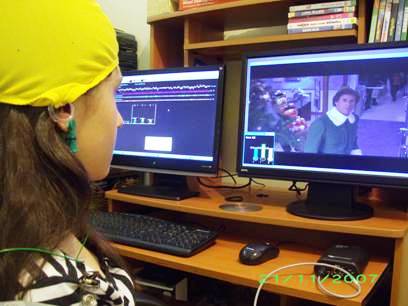
She then noted that a “new kind of mental effort calls for something very different — the carving out of ‘new brain paths’, the ranking in different order of the little brain lives.”
Her idea was, unmistakably, a preemptive nod to our modern science’s newly understood doctrine of “neuroplasticity” —
“… the brain’s ability to reorganize itself by forming new neural connections throughout life.”(Wikipedia) This fact of occult science began to be recognized thanks to the findings of Dr. Paul Bach-y-Rita, called “the father of sensory substitution and brain plasticity.”
These “now commonly accepted concepts, [were] novel ideas when [he] first conceived of them [70 years after Blavatsky] in the 1960’s.” (Salus University)
The world of brain science was forever changed. Yet, “the scale of change [in the brain] is much smaller than what goes on during the critical period of development,” said a study co-author Elly Nedivi, a neuroscientist at the Massachusetts Institute of Technology (MIT) —
“but the fact that it goes on at all,
is earth-shattering.”
![]()
The truth is that neuroscientists today are completely baffled by how the brain is able to organize itself so perfectly.
Yet, the word “science” comes from the Latin word “scire” which means to know. “Science” is supposed to be a systematic, organized way of investigating the world. The catch is when specialized learning turns into a dogmatic worldview, it then becomes an end-in-itself — distorting what might have resulted in a more holistic truth.
With persistent reference to occult science Blavatsky insisted (SD 1:14), that “consciousness is inconceivable to us apart from change,” and, “motion best symbolises change, its essential characteristic.”
The Miracle of Brain Organization
West Meets East
In the emerging science of neuroplasticity and growing brain cells, we’ve come full circle again — in this case back to Buddha, who maintained it is “thoughts” that reign supreme over the physical brain and body.
“All that we are is the result of what we have thought,” says the opening verse in the Dhammapada:-
“… all that we are is founded on our thoughts and formed of our thoughts.”
![]()

And if our thoughts can and should grow, it follows logically that the medium through which they are expressed, the neurons (brain cells), should also grow.
But what is it that initiates and orchestrates these changes? Must it not be that actual “thought producer” — the soul-perceiver within everyone? Theosophy maintains there must be, in fact, a higher directing power
above the intellect and functional brain mind, that often accomplishes what might seem like miracles.
![]()
Scientists Study
Tibetan Monks
A clip taken from the History Channel documentary about a Buddhist monk of Tibet who some how mummified himself through meditation, and whose body has somehow been miraculously preserved.
Scientist set out to discover what happened and study the monks preforming meditation under scientific test conditions, with amazing results.
Brain Plasticity
Is there is a Master Planner working behind the scenes in our brain? One of the most convincing proofs of this is in the brains almost limitless resilience and capacity to adapt to changing conditions, to heal itself and restore order in the body — from the inside out.
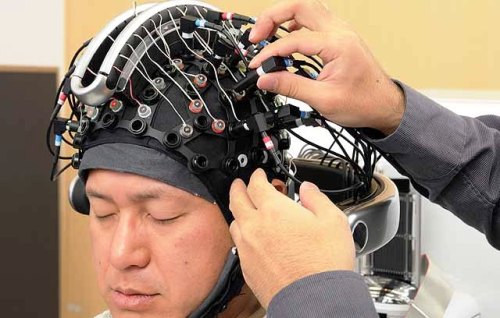
“We are beginning to harness the brains incredible ability to invent itself, and then reinvent itself throughout life,” says the commentator in this video clip.
This is the true story of young girl, Jody Miller, who “leads an idyllic life for a nine-year-old girl.” Yet she underwent, when all other measures failed to cure her life-threatening illness, some of the most drastic surgery imaginable — half her brain was removed.
The Jody Miller Story
The Plastic Atom
Brain cells, like all substance, is built on the notion of “atoms” which were once thought to be “indivisible,” over the objections of H. P. Blavatsky in her Secret Doctrine.

That reductionist view of atoms changed completely in the first few years of the 20th Century. The idea of rigidly unchangeable brains may well have been a stubborn carry-over from the earlier view about atoms, and had simply not been challenged until recently. It’s ironic how similar the words “neutron” and “neuron” are.
Laboratory scientist Dean Radin describes the relationship between mind and body as seen through both Eastern and Western sciences:
“If West meets East, could science verify our deep union with the universe that mystics have been talking about for thousands of years?”
![]()
Eastern Science
“Gain Siddhis for thy future birth.”
The Fickle Atom
The illusion of solid matter “was shattered in 1897,” writes David Pratt, in his article The Infinite Divisibility of Matter,”with the discovery of the electron, the first subatomic particle”…
…the “uncuttable” had been cut. This was followed by the discovery of the proton in 1911 and the neutron in 1932, the two particles that make up the atomic nucleus.
In the decades that followed, subatomic particles began to proliferate like bacteria, and today over 200 are known.
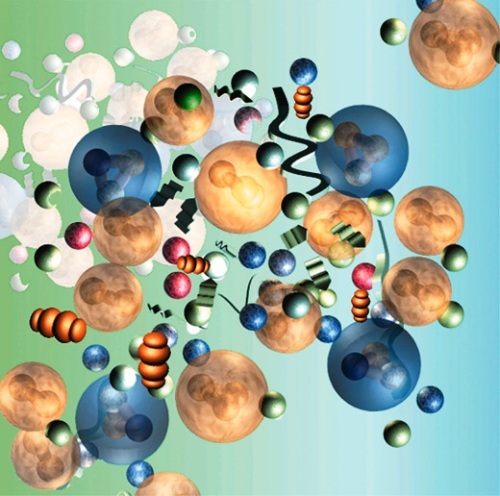
Neutrons & Protons
“This is sufficient to show how absurd are the simultaneous admissions of the non-divisibility and elasticity of the atom. The atom is elastic, ergo, the atom is divisible, and must consist of particles, or of sub-atoms. And these sub-atoms?”
– (H. P. Blavatsky)
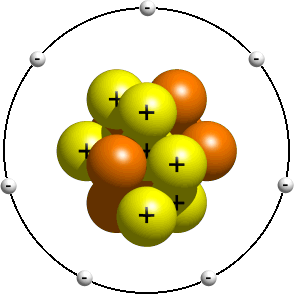
Atoms
“They are either non-elastic, and in such case they represent no dynamic importance,” Blavatsky went on to say, “or, they are elastic also — and in that case, they, too, are subject to divisibility. And thus ad infinitum.”
“But infinite divisibility of atoms resolves matter into simple centres of force, i.e., precludes the possibility of conceiving matter as an objective substance,” Blavatsky wrote:
“This vicious circle is
fatal to materialism.”
– H. P. Blavatsky
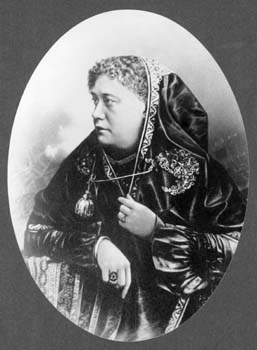

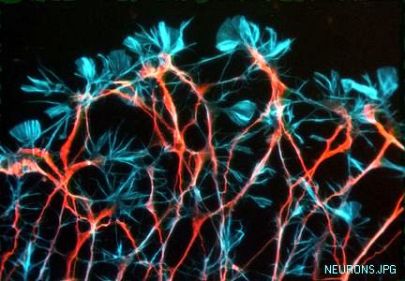




Help? I understand that the mind uses the brain; that the mind can exist separate from the brain. But what uses the mind?
LikeLike
Two suggestions for further study and meditation, first the Voice of the Silence:
“Thyself and mind, like twins upon a line, the star which is thy goal, burns overhead. The three that dwell in glory and in bliss ineffable, now in the world of Mâyâ have lost their names. They have become one star, the fire that burns but scorches not, that fire which is the Upâdhi of the Flame. And this, O Yogi of success, is what men call Dhyâna, the right precursor of Samâdhi…
http://www.theosociety.org/pasadena/voice/voice1.htm
The second suggestion is W.Q.Judge’s article: The Three Planes of Human Life.
http://www.theosophytrust.org/203-the-three-planes-of-human-life
http://www.theosophytrust.org/203-the-three-planes-of-human-life
And now thy Self is lost in SELF, thyself unto THYSELF, merged in THAT SELF from which thou first didst radiate.
LikeLike
This is great stuff.
Sent from my iPhone
>
LikeLike
Welcome. Thanks for your comment!
LikeLike